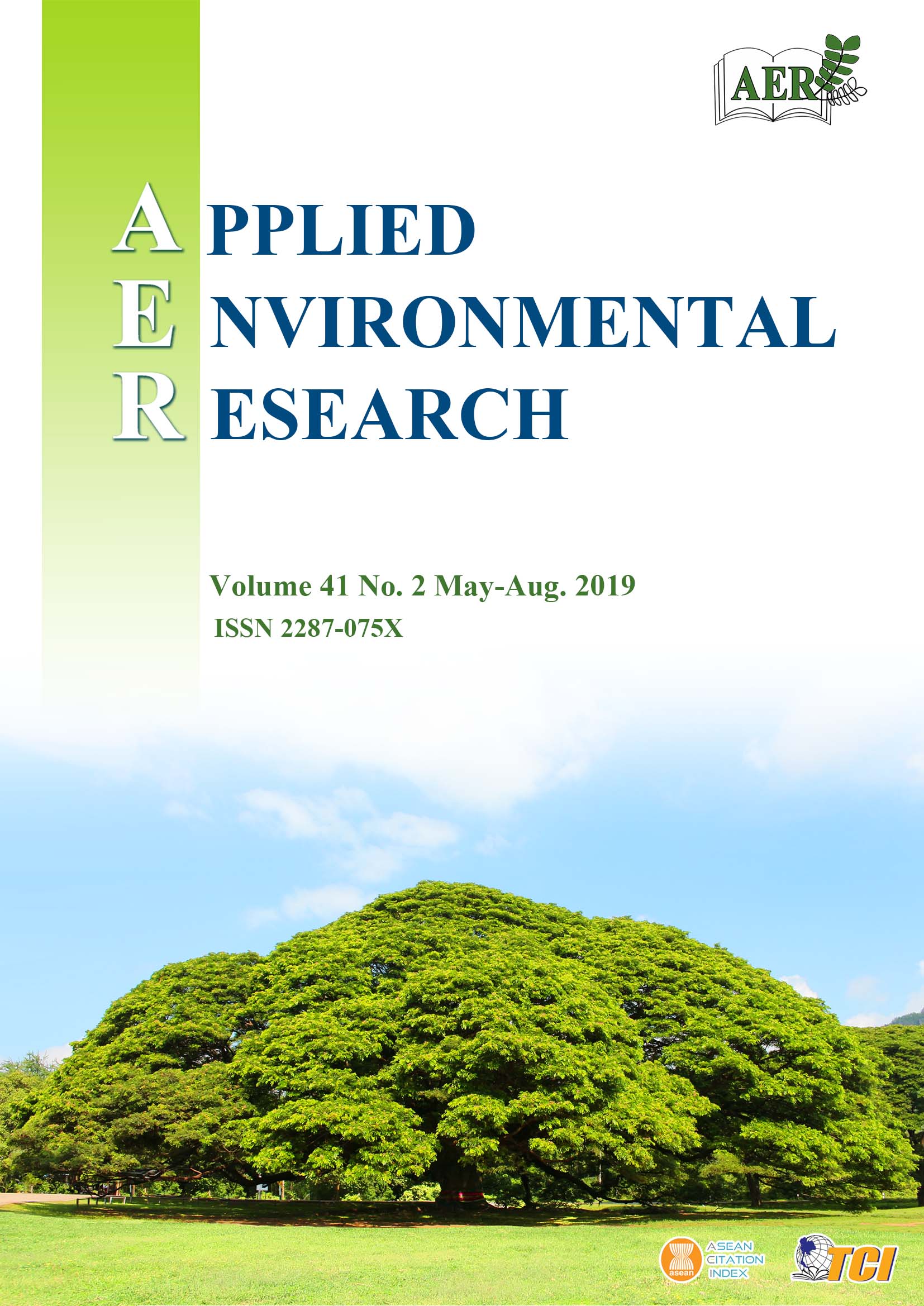Environmental Soil, Water, and Sediment Quality of Dong Thang Landfill in Can Tho City, Vietnam
Main Article Content
Abstract
This study is a preliminary assessment of water, soil, and bottom sediment quality at and around Dong Thang landfill in Co Do district, Can Tho city, Vietnam. Four canal water samples, one leachate sample, and three soil samples from the surrounding rice fields, two bottom sediment samples from the canals, and one bottom sediment sample from the leachate pond were examined for this purpose. The results revealed that the leachate sample contained six heavy metals (Mn, Fe, Cu, Zn, Cr, and Ni) with high electrical conductivity (EC), biochemical oxygen demand (BOD), chemical oxygen demand (COD), total suspended solids (TSS), ammonia (NH4+-N), nitrate (NO3--N), and phosphate (PO43--P) (9922.7 μS cm-1, 832.00 mg L-1, 3,729.08 mg L-1, 743.75 mg L-1, 366.27 mg L-1, 6.03 mg L-1, and 0.22 mg L-1, respectively). Further, seven heavy metals (Zn, Cu, Mn, Cr, Ni, Pb, and Fe) were detected in the sediment of the leachate collection pond. COD, TSS, NH4+-N, Mn, and Fe concentrations for surface water exceeded the permissible level prescribed by the Vietnam national standard for surface water (QCVN 08-MT:2015/BTNMT). All heavy metals found in the leachate sediments were also detected in canal sediments and rice-field soil, thereby leading to the conclusion that pollutants disperse into the surrounding environment. Further, principal component analysis revealed that 91.3% of the variations in soil and sediment data could be explained by two primary components, PC1 and PC2. These components represent two sources of pollution, agricultural production and landfill activities, besides other pollution sources. The findings of this preliminary study show that water, soil, and bottom sediment in the area surrounding the landfill are contaminated with organic matter, nutrients, and heavy metals. Therefore, monitoring of the environment in the study area should be conducted to detect any pollutants, and alert local authorities and environmental managers.
Article Details

This work is licensed under a Creative Commons Attribution-NonCommercial 4.0 International License.
Published articles are under the copyright of the Applied Environmental Research effective when the article is accepted for publication thus granting Applied Environmental Research all rights for the work so that both parties may be protected from the consequences of unauthorized use. Partially or totally publication of an article elsewhere is possible only after the consent from the editors.

